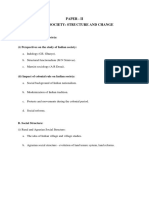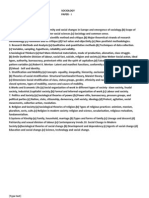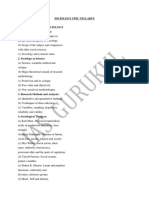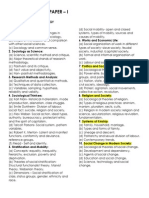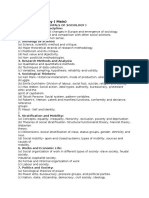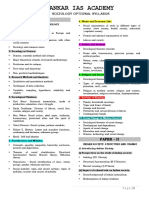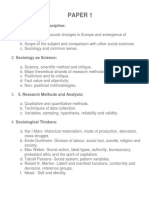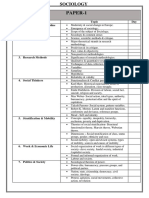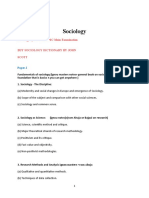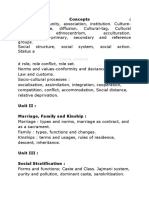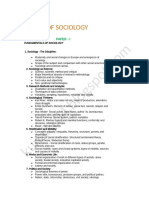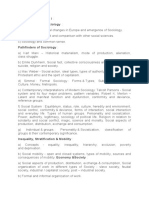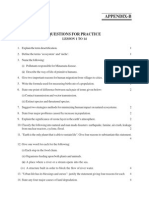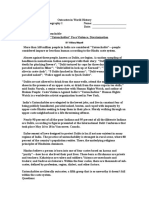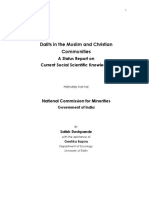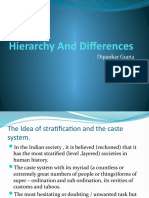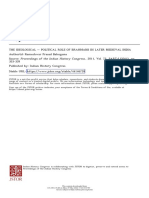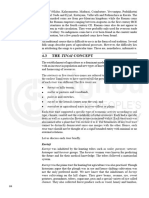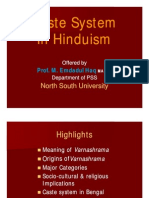II INDIAN SOCIETY : STRUCTURE & CHANGE
A. Introducing Indian Society:
(i) Perspectives on the study of Indiansociety:
(a) Indology (GS. Ghurye).
(b) Structural functionalism (M N
Srinivas).
(c) Marxist sociology (A R Desai).
(ii) Impact of colonial rule on Indian
society :
(a) Social background of Indian nationalism.
(b) Modernization of Indian tradition.
(c) Protests and movements during the
colonial period.
(d) Social reforms.
B. Social Structure:
(i) Rural and Agrarian Social Structure:
(a) The idea of Indian village and village
studies.
(b) Agrarian social structure - evolution
of land tenure system, land reforms.
(ii) Caste System:
(a) Perspectives on the study of caste
systems: GS Ghurye, M N Srinivas,
Louis Dumont, Andre Beteille.
(b) Features of caste system.
(c) Untouchability - forms and perspectives.
(iii) Tribal communities in India:
(a) Definitional problems.
(b) Geographical spread.
(c) Colonial policies and tribes.
(d) Issues of integration and autonomy.
(iv) Social Classes in India:
(a) Agrarian class structure.
(b) Industrial class structure.
(c) Middle classes in India.
(v) Systems of Kinship in India:
(a) Lineage and descent in India.
(b) Types of kinship systems.
(c) Family and marriage in India.
(d) Household dimensions of the family.
(e) Patriarchy, entitlements and sexual
division of labour.
(vi) Religion and Society:
(a) Religious communities in India.
(b) Problems of religious minorities.
C. Social Changes in India:
(i) Visions of Social Change in India:
(a) Idea of development planning and mixed
economy.
(b) Constitution, law and social change.
(c) Education and social change.
(ii) Rural and Agrarian transformation in India:
(a) Programmes of rural development,
Community Development Programme,
cooperatives, poverty alleviation
schemes.
(b) Green revolution and social change.
(c) Changing modes of production in
Indian agriculture .
(d) Problems of rural labour, bondage,
migration.
(iii) Industrialization and Urbanisation in India:
(a) Evolution of modern industry in
India.
(b) Growth of urban settlements in
India.
(c) Working class: structure, growth,
class mobilization.
(d) Informal sector, child labour.
(e) Slums and deprivation in urban
areas.
(iv) Politics and Society:
(a) Nation, democracy and citizenship.Political
parties, pressure groups ,
social and political elite.
(c) Regionalism and decentralization of
power.
(d) Secularization
(v) Social Movements in Modern India:
(a) Peasants and farmers movements.
(b) Womens movement.
(c) Backward classes & Dalit movement.
(d) Environmental movements.
(e) Ethnicity and Identity movements.
(vi) Population Dynamics:
(a) Population size, growth, composition
and distribution.
(b) Components of population growth:
birth, death, migration.
(c) Population policy and family planning.
(d) Emerging issues: ageing, sex ratios,
child and infant mortality, reproductive health.
(vii) Challenges of Social Transformation:
(a) Crisis of development: displacement,
environmental problems and
sustain-ability.
(b) Poverty, deprivation and inequalities.
(c) Violence against women.
(d) Caste conflicts.
(e) Ethnic conflicts, communalism, religious
revivalism.
(f) Illiteracy and disparities in education.
